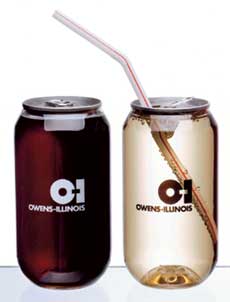
Sky-high material costs were the reason, according to David Andrulonis, director of food & beverage products at Toledo, Ohio-based Owens-Illinois Plastics Group. Process refinements and new barrier materials have helped drive down costs to a point where the price premium is sufficiently low to make PET cans a packaging option, at least for niche products and special promotions, he says.
O-I’s can relies on SurShot, a multilayer injection process with virgin PET on the inner and outer layers and recycled content at the core, sandwiched between two barrier layers.

Standard metal ends are used, and crimping speed remains the biggest production hurdle to commercialization. Andrulonis anticipates an early-2003 beta test for the cans. Helping to offset the packaging’s limitations are its striking look and ability to accommodate multiple shapes.